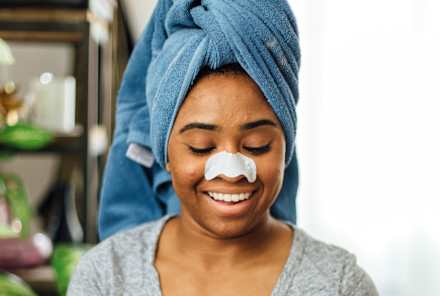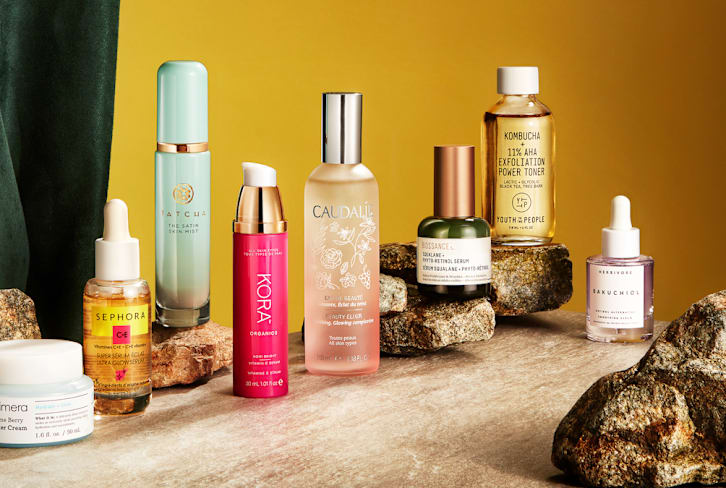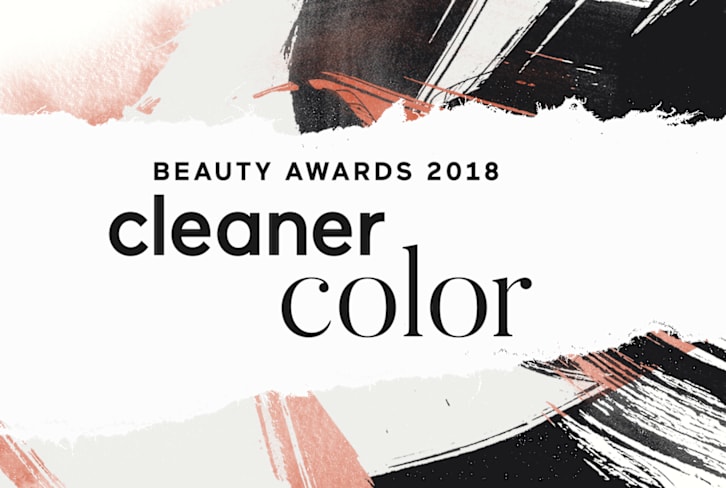Advertisement
Your Ultimate Guide To Essential Oils: Uses, Benefits, Extraction & How To Use Them, Explained
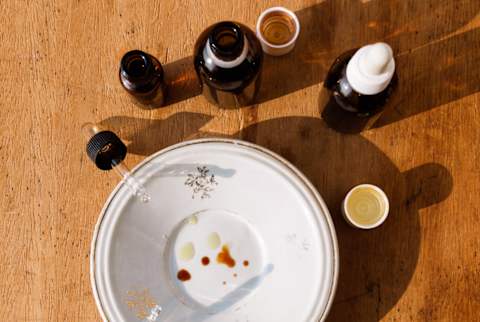
Essential oils are gaining popularity in droves, though their herbal counterparts and natural solutions have been harnessed for centuries mainly in Eastern medicine. As Western holistic care and naturopathic remedies continue to provide alternative solutions for people desiring to take charge of their own health care, it is important to have a firm understanding of essential oils. A popular alternative for those desiring more natural remedies to anxiety, sleep, allergies, and more, essential oils can be properly used only once you have taken the time to learn about and understand their volatile and complex compositions as well as the guidelines for safe usage. Essential oils can be an amazing health care solutions for many people, but you have to know what you’re doing before you start using them. Let’s start with the basics and work our way into the details so that you will be ready to take charge and help support your body's healing process with powerful and potent high-quality essential oils.
What are essential oils?
Breaking it down into basics, essential oils (sometimes referred to as EOs) are volatile aromatic compounds extracted from the bark, flowers, leaves, roots, seeds, stems, and other parts of plants. They give a plant its distinct aroma and play a crucial role in the survival of the plant as a whole, as well as its participation in the chain of life. Using the word "volatile" in reference to essential oils indicates the incredible ability of their tiny organic molecules to change state from liquid to gas very quickly when at room temperature. Each essential oil has a unique composition based on the variety of its chemical constituents that vary from plant to plant and even species to species. Each essential oil consists of both primary and trace constituents. Scientists are always learning about and discovering new constituents and the synergistic play they have in each essential oil as well as how they react when combined into blends.
What affects the quality of essential oils?
What plays an even more interesting role in the development and extraction of essential oils is the treatment of the plants1, especially the outside influences that can directly affect their internal constituents. Something as simple as the fertilizer used during the growing season, when the plant was harvested, and the part of it that was picked can dramatically affect the potency and efficacy of the resulting essential oils. Add to that the climate, weather patterns, and geographical region where the plants were grown, and you have a small glimpse into the complexity of essential oil production. Even something as small as the way in which the plant was pollinated can dramatically affect the quality and aroma of the resulting essential oils due to alterations in the chemical constituents. When you take a look at the method of extraction and all of the intricacies that go along with those procedures, you can begin to see why it is important to consider the behind-the-scenes information of your essential oil of choice.
What affects the potency of essential oils?
All of these considerations can affect the potency of the essential oil. The rule of thumb to remember is that one drop of peppermint oil is the equivalent of 28 glasses of peppermint tea! This can an amazing quality but also one that requires caution when using essential oils. Though we most often think that more is better, that is definitely not the case when it comes to essential oils. It is better to start small and then add more if needed. Using them in your cooking can provide a punch of flavor with a tiny drop, where you might normally have to use tablespoons of herbs, and can give you a longer shelf life for cooking staples. Using one drop of lavender essential oil can help to relax the body from a tension headache instead of taking several pills of an over-the-counter alternative that expires within a few years.
Why are essential oils so expensive?
And the question is always posed: Why are they so incredibly expensive? If you’re dealing with a high-quality essential oil, it usually has to do with the quantity of plant material required for production. When you look at the peppermint example, it obviously takes a large quantity of plant material simply to gain one drop of peppermint essential oil. For herbs and plants that grow in abundance and are relatively easily harvested, such as citrus fruits or basic herbs, the cost of the essential oils aren’t as steep. The rinds of citrus fruits are cold-pressed to extract the essential oils, so it is somewhat easier than the pounds upon pounds of rose petals that are needed just to produce a single drop of rose essential oil. Many perfume companies substitute the less expensive geranium oil for rose to achieve their desired scent before diluting it down to stretch the quantity. This is why citrus essential oils cost considerably less than something like rose essential oil. The more important question to be asking yourself is "Should some be expensive?" or "Should they vary in price?" Both answers are a hard yes when you consider the methods required to achieve a high-quality therapeutic essential oil.
All of this information leads us to consider the importance of selecting your essential oils from a trustworthy and reputable company who not only understands the nuances associated with growing, harvesting, and extraction but also one who tests for the highest quality in each of their products. It isn’t enough to simply grow them the right way or to extract them with a quality method. Every step of the way, every detail must be taken into careful consideration to ensure you are getting only the best and most natural high-quality essential oil for your family and yourself. Companies are very quick to add other chemicals to offset the cost of their essential oils or cut corners in the production that will alter the constituents. This results in lesser-quality oils that could actually be harmful.

The fascinating history of essential oils.
While essential oils as we know them today were not necessarily used centuries ago, the aromas, the herbs, and the precursor of our modern essential oils have been utilized in health care and society for thousands of years. All of this history draws on the knowledge and texts from my training as a certified aromatherapist. Beginning in Ancient Mesopotamia approximately 5,000 years ago, the aromas of essential oils were commonplace in every area of life. Used heavily in rituals and ceremonies, Mesopotamians believed them to have spiritual qualities and would anoint themselves with aromatic salves and seed oils steeped with plant material to achieve equilibrium in body, mind, and soul. In India, ayurveda utilized essential oils to help the body balance energy and achieve harmony with the outside world. The ancient Egyptians also harnessed the unique power of essential oils in their process of mummification, as we are shown in the hieroglyphics of their time. Even the Bible references oils used for anointing and healing, prized and precious so much so that they were presented to Jesus Christ by the Wise Men.
The chronicling of essential oil usage in holistic medicine began with the ancient Chinese, who documented their consistent usage of these remedies in a text that noted over 300 plants and their healing power. In Greece, Hippocrates also wrote about his use of essential oils especially when the plague hit Athens. Many Greek physicians noted their use of aromatic plants as their first-choice solutions for many health care needs. Of course, essential oils as we know them were not conceived at this point in time, but they knew that the aromas were doing something powerful with their citizenry. When the Romans caught on to this trend, they became obsessed with fragrance, allowing for a healthier and better-smelling population thanks to their other obsession—public health. Baths and massages made their way into everyday life, and we are all thankful for this shift in hygiene.
As many turns in history do, the next shift in essential oil history follows the trail of capitalism beginning in Arabia as the famous spice trade route introduced an array of spices throughout the land. The Frankincense Trail allowed the aromas to travel and influence the lives of everyone within a region...if they could afford it. Eventually reaching Europe, essential oils were famously used to drive the Great Plague out of the land once the people realized that those with aromatics in their homes seemed to be immune to the rampant disease.
The mid-19th century brought us the brilliance of René-Maurice Gattefossé, credited for coining the term "aromatherapy." His research took an interesting turn when he accidentally burned himself and treated it topically with lavender essential oil. While synthetics became the focus of more modern medicine and industry, Gattefossé focused on the healing power of essential oils and worked the rest of his life chronicling their chemical properties and medicinal uses.
In our 21st-century world, more people are seeking out natural alternatives, especially with antibiotics proving to be more ineffective due to overprescription and bodily resistance to them. While essential oils harness amazing power to support the body in healing processes2, it becomes more important to educate the public about proper usage, methods, and techniques. It seems that essential oils are appearing everywhere these days, but there is little regulation over them, and "essential oil" can mean anything under the wide umbrella of this terminology. It takes a discerning consumer to select essential oils for their own unique wants and needs.
Essential oil designations.
With the vast majority of essential oils on the market today being used in the food and perfume industry, quality standards for therapeutic essential oils have fallen by the wayside. Food flavoring oils or those used for perfumes and cosmetics are highly adulterated and often contain a variety of additives and solvents in order to standardize the scent or flavor. While high-quality therapeutic essential oils can naturally vary in scent and flavor due to the nuances in their production mentioned earlier (pollination, harvesting technique, extraction, etc.), those used in the food and perfume industry rely on having the same scent or taste every time. If you were to buy your favorite perfume and it smelled differently every time, or if your favorite soft drink tasted different every time, you probably wouldn’t purchase it reliably because it wouldn’t serve your expected purpose. As a result, the food and perfume industry rely on synthetic, chemically engineered oils to ensure the same scent and/or taste.
Food-grade essential oils.
Food-grade oils have regulations based on consumption, so those labeled as GRAS, or Generally Recognized As Safe3, have passed the standard for human consumption and must be stamped with an expiration date. Now, there are high-quality essential oils that pass these standards and are stamped with dates as well—those that have been approved as dietary supplements and are safe to consume internally. These oils, like citrus fruits or herbs found in your medicine cabinet, can be used in cooking, but only with the advice of a trusted health care professional. Food-grade oils, however, have already infiltrated our diet on a regular basis, so you have almost certainly already ingested some form of essential oil at some point.
Perfume and fragrance essential oils.
In the perfume and cosmetics industry, a similar situation can be found with adulterated essential oils being used to standardize scents of products. With the majority of essential oils being produced in the world today going to these industries, it is important to understand just what you’re getting in each product. In the perfume industry, there are four different terms given to different percentages of essential oils: eau de cologne, eau de toilette, eau de parfum, and perfume. They range in content from 2 to 40 percent, with the remainder being alcohol and water. The essential oils, however, are not therapeutic-grade. Solvents and additives may be adversely affecting your health over time, and you may be completely unaware since there are very few regulations2 (in the United States) concerning cosmetics.
As a result, companies producing high-quality therapeutic essential oils have been forced to coin their own terminology to ensure quality standards that they set for themselves since there is no regulating body. This is where terms like "certified pure" or "certified pure therapeutic grade" originate. Therapeutic refers to the purity and efficacy of the essential oil’s constituents, directly relating to its purpose for health care. Unfortunately, there isn’t even a regulation for what qualifies as therapeutic. This is why it is so important to research your company of choice before using the essential oils for health care.
Even scarier is the prospect that an essential oil can be simultaneously pure and low-quality. All of the factors that I mentioned earlier concerning growing, harvesting, extraction, and distilling variations make a huge difference in the quality of the essential oil. It may be 100 percent pure, but the quality can be significantly lower. This is why it is so important to ask the following questions of an essential oil company.
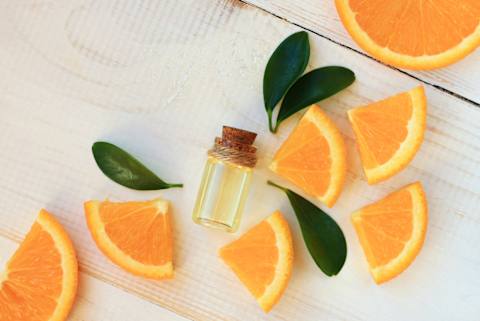
How to know if your essential oil is high-quality:
- Do you source from indigenous regions?
- Are your plants harvested at peak times for only the highest quality?
- Do you use pesticides of any kind or claim to be organic?
- Are your products quality-tested with both gas chromatography and mass spectrometry? (Both tests are necessary to ensure the presence of correct compounds and the absence of impurities and pesticides.)
- Do you test for microbial properties?
- Do you use Fourier transform infrared spectroscopy (FTIR) or chirality testing? (FTIR testing ensures the potency and consistent quality of each batch by identifying structural components of EO compounds, while chirality testing examines each batch for synthetic elements.)
- Do you have a process of organoleptic testing? (Expert distillers are trained to use their senses as a first line of preliminary quality control.)
- Do you develop growing partnerships with the people in the countries where the plants are grown and harvested?
- Are your business practices and the leaders in your company trustworthy?
And don’t second-guess your gut instincts. If the oil smells intense or off instead of crystal clean and balanced, or if it feels oily or leaves a residue, you are probably dealing with a lesser-quality oil. Sniff testing a lower-priced bottle of essential oil versus one of the more reputable companies’ bottles can often be an eye-opening (or nose-offending) experience as well. You will always have to use more of a lesser-quality oil to achieve the same results, though you might find that you have adverse effects first.
How to tell if an essential oil is high-quality.
Essential oils are made through a number of different extraction methods. If delving into the depths of company history and extraction processes doesn’t sound enticing, there are some simple techniques that you can use to discriminate the high-quality from the other essential oils.
Judging oils by their labels can give you a first line of defense against bringing adulterated essential oils into your home. On every EO label, you should clearly see both the common and scientific name of the individual oil (or oils if buying a blend) along with any carrier oils if it is diluted. The word "therapeutic" or some trademark including it should appear if you want the essential oils to support your health and wellness. The bottle should be 5 to 15 mL in dark glass (amber or cobalt) and fitted with both an orifice reducer and a tightly fitting cap; dropper tops, if present, should come on the side. Expiration dates, while not required, indicate the FDA approval for the oil on the GRAS list or an indication of shelf life. Directions for usage, at the bare minimum, should indicate aromatic, topical, and/or Internal usage (ATI). The company manufacturing the essential oil should also appear on the label, preferably one that you recognize and trust based on your research. Finally, the price should vary from bottle to bottle due to the unique process of extraction and the quantity of plant material required; in other words, similar prices for each oil should be a huge red flag for you!
How to store essential oils.
The four C's are a way to remember how to store essential oils in a way that preserves them. Just as there is a delicate growing and extraction process, there is also a careful way that you should store your high-quality essential oils to ensure they continue to be as potent and powerful as possible. The four C’s are an easy way to remember these guidelines:
- Cool. Heat or sunlight can damage essential oils, breaking down their chemical composition or causing them to evaporate too quickly. Dark bottles should contain the oils and store them in a cabinet away from heating elements.
- Capped. Your bottles should always be tightly capped with an orifice reducer and a lid screwed on tightly to prevent evaporation and oxidation.
- Centered. Upright your bottles always to prevent the potent oils from breaking down the plastic in the orifice reducers and caps. Citrus oils especially have the ability to eat through materials; most EO companies use high-quality plastics (No. 1 or 2 PETE), but even these can erode over time if left in contact with the EO.
- Contained. Only glass or stainless-steel containers should be used. To travel with EOs, use a specially made carrying case with tiny glass drams or rollerball bottles that keep them contained, or padded foam storage for full-size bottles in a special case. And, as always, keep them away from children!
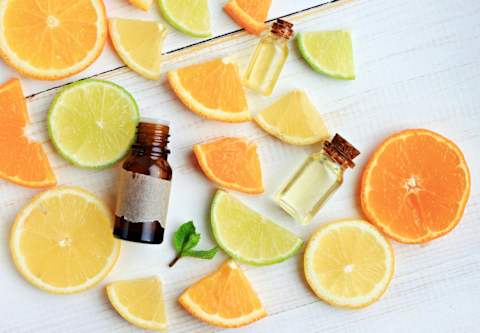
Essential oils chemical property overview.
Because my roots ground me in biochemistry—my degree is in biochemistry, and I've worked as a biochemist for four years—I always like to share a bit about the chemical properties of essential oils for the science nerds like me. As the backbone of life, chemistry gives us a glimpse into the foundation of our world, and essential oils provide such a gift from nature. A complex combination of carbon, oxygen, and hydrogen, with some constituents containing nitrogen and sulfur, essential oils are further divided into two specific groups based on chemical constituents: hydrocarbons and oxygenated compounds.
Hydrocarbon essential oils.
The hydrocarbons consist mainly of monoterpenes and sesquiterpenes.
Monoterpenes cleanse and stimulate our moods while supporting our bodily systems with their antioxidant power. Cellular vitality can be supported by using monoterpenes containing limonene, pinene, terpinene, and cymene. The most commonly used are citrus oils, frankincense, black pepper, dill, fennel, white fir, juniper berry, coriander, cypress, rosemary, melaleuca, and marjoram.
Sesquiterpenes cleanse our bodies by supporting circulation and digestion while also giving emotional balance allowing for mental clarity and a sense of well-being. The most common sesquiterpenes in essential oils are cedrene, zingiberene, himachalene, and caryophyllene found in cedarwood, ginger, helichrysum, and Melissa.
Oxygenated essential oils.
Oxygenated compounds consist of several subgroups, including alcohols, phenols, aldehydes, esters, ketones, and oxides.
- Breaking it down into the basics, Alcohols cleanse our skin and protect from environmental threats while simultaneously supporting our moods and cellular growth. The most common alcohols are santalol in sandalwood, linalool in basil, marjoram, cilantro, lavender, coriander, and clary sage, and menthol in peppermint.
- The phenols compose a very specialized group packed with powerful antioxidants that protect us from environmental threats and promoting cellular growth, though they are very potent leading to the potential for skin irritation. Phenols such as thymol and carvacrol in oregano and thyme and eugenol in clove should always be diluted with a carrier oil.
- Aldehydes also protect us from environmental threats to support healthy bodily and immune function while calming our emotions and moods. The most common include cinnamaldehyde in cassia and cinnamon, geranial in lemongrass and Melissa, and neral in lemongrass.
- Esters calm our moods, emotions, and muscles while supporting hormones, nourishing skin, and supporting restful sleep. The most well-used esters are the methyl salicylates in birch and wintergreen, the linalyl acetate in clary sage and lavender, and the neryl acetate in helichrysum.
- The ketones not only calm our moods to support restful sleep but afford us mental clarity with powerful antioxidants that support our digestion and respiration. Common ketones include carvone in dill, camphor in rosemary, and methone in peppermint.
- Oxides promote healthy immune function and protect against environmental threats as well, supporting healthy respiration and easing our feelings of tension. They can be recognized by their suffix "-oxide" or "-ol," such as eucalyptol (also called 1, 8-cineole) in eucalyptus, rosemary, peppermint, and thyme, rose oxide, linalool oxide, and pinene oxide.
How to use essential oils.
Knowing the proper techniques for safe and effective use of essential oils to support your health and well-being is, well, essential! I cannot tell you how many times I have seen people with amazing essential oil collections that they simply don’t use because they haven’t learned the basics. Let’s start with the categories of essential oil based on their effects: calming and soothing, uplifting and energizing, and grounding and balancing. Whenever I mention essential oils, I will always note their category as a basic indication of the effect they can have on your body. Just as important are the three main ways to use essential oils: aromatically, topically, or internally. Understanding both the basics and the intricacies of these techniques can make the difference in finding success in your essential oil journey. If you are just getting started with essential oils, it’s always a good idea to have a checklist on hand as an easy-to-use reference.
Aromatic essential oil uses.
The easiest and most common method for utilizing the incredible power of high-quality essential oils is aromatically, or by aromatherapy. For thousands of years, people have harnessed this power to improve moods, help with anxiety, and heal via the olfactory lobes. With a high percentage of the vapors being absorbed into your body, the chemical constituents trigger areas of the brain to stimulate the neurochemistry of other systems for a multiple and incredible effect. Anyone who has smelled an aroma from the other side of a room knows the incredibly volatile nature of essential oils and their ability to immediately permeate an entire area for instantaneous effect on the mind and body. The primary constituents and chemical makeup of the essential oils that I mentioned earlier have been researched in order to determine their direct impact on the body, so know that when I reference an essential oil’s effects, it has been well-researched and documented.
Inhaling the oils can be done in a variety of ways. Direct inhalation should always be your first use of an oil to see how it affects you, which means sniffing the aroma from an open bottle of oil. Use caution in how close the bottle is to your nose, since the microparticles of the oil travel into the brain’s olfactory system triggering the limbic system, which affects a variety of functions like emotions, memory, and sleep. Into your respiratory system they move, being absorbed into lung tissue and jumping into your bloodstream to travel through the body and supporting the areas of need. Eventually they will be evacuated through the kidneys, lungs, and pores but only after having affected your body in a dramatic way, especially hormonally by their effect on the endocrine system.
Indirect inhalation essential oil uses.
This method refers to placing the essential oil on a vessel, such as a cotton ball, felt pad, reed, or cloth, which then releases it into the air. It is a great way to easily scent small areas or to keep your mood elevated. Pop a peppermint pad in your gym bag to nix odors and amp up your workout, tape a lemon cotton ball to a ceiling fan to cleanse the air, or spray lavender on your bedclothes to support restful sleep. Even hospitals have gotten in on the act, utilizing essential oils in their ventilation systems.
Diffusion or nebulizing diffusion for essential oils.
This method utilizes a machine to create a fine mist of essential oils usually paired with water for easy dispersion throughout the air. I recommend diffusing for only 15 to 30 minutes at a time with an hour break in between to allow your body to recover when first using essential oils. You also want to ensure that the oil being diffused is safe for anyone in the immediate area. They can be especially helpful for those with respiratory issues, though be sure to discuss this with a trusted health care provider ahead of time. My favorite is an ultrasonic cool-air diffuser, which oxygenates the molecules of the air with a fine water–essential oil mixture, but be sure that what you purchase is specifically recommended for high-quality essential oils, as a lower-quality product could break down and release impurities into the air. This is a great way to get the healing qualities of essential oils to your entire family at the same time. A simpler method of diffusion can be done with steam or water vapor as well, by heating a mug of water and dropping the EO into the water, then deeply breathing in the steam, or simply using a drop on a cotton ball while you shower to work into the steam.
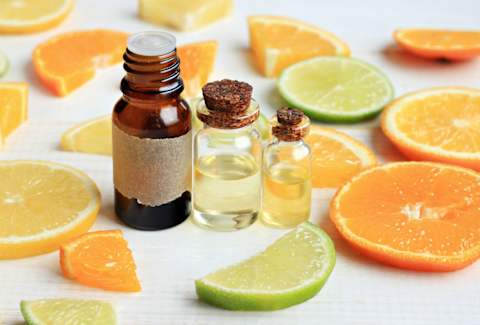
Using essential oils topically.
Topical, or direct, application is the next step after aromatic, which simply involves directly applying the essential oils to the skin in the area where they are needed most. This allows the microparticles of the oils to mix with the sebum of your skin for absorption into the body’s lymphatic system into the soft tissue. Your muscles and connective tissues are all affected, with the essential oils eventually moving into the bloodstream and traveling like in aromatic application. This method has a dual effect, however, since you are getting both aromatic benefits as you inhale the oil with your skin being the vessel, and then the direct absorption into the body for a secondary effect.
Two terms are associated with topical application: neat and diluted. Neat application means applying the EOs directly to your skin, which can only be done safely with certain essential oils (such as frankincense or lavender) and for certain people. It is always recommended to generously dilute first and then increase concentration to achieve your desired effect. Diluted refers to adding the essential oil to a carrier oil to allow for more efficient absorption into your skin as it prevents the volatile oils from evaporating. Essential oils are extremely potent, however, and you should only ever use one drop at a time, if that, with a carrier oil, especially when using with children or on sensitive skin.
Blending essential oils with carrier oils.
Carrier oils are fatty vegetable, nut, or seed oils easily blendable with the lipophilic essential oils, the most commonly used being fractionated coconut oil. While raw coconut oil is a semisolid at room temperature, it liquefies when heated; the fractionated form is liquid at room temperature allowing for easy dilution of essential oils. Other popular carrier oils are jojoba oil, popular for facial blends since it is the closest to your skin’s natural sebum, sweet almond oil for the offending nose with its light scent and vitamin B and E goodness, and grapeseed oil in massage. Be sure to always choose expeller-pressed versions of these oils. When using oils for massage, be sure to always dilute 15 to 30 percent, or one drop of essential oil for every three drops of carrier oil.
Always, always, always dilute essential oils when using them with children, referring to the guidelines in my book, Smart Mom's Guide to Essential Oils, and never use eucalyptus, peppermint, rosemary, or wintergreen around babies and young children due to potential respiratory issues. Never use them on children younger than three months, and after that, discuss their use with a trusted health care provider. Pregnant and breastfeeding women or those with health complications should always discuss essential oil usage with their provider as well.
I recommend always patch-testing a new essential oil on your skin in a small location heavily diluted to see if you react; increase the concentration until you reach your desired effect, but pay careful attention to any sensitivities. The most common reactions caused by essential oils are from not diluting enough. That said, never try to wash off an essential oil if you do have a reaction since the water will only repel the oil and drive it in deeper; always dilute with more carrier oil until the reaction subsides or seek professional help.
Certain oils always require dilution due to their potential to irritate skin. Hot oils can create a warming or burning sensation, such as with cassia, cinnamon, cinnamon bark, clove, hyssop, and oregano. Cooling oils create a cooling or tingling sensation such as with camphor, eucalyptus, lemongrass, ocotea, peppermint, spearmint, thyme, and wintergreen. Phototoxic or photosensitive oils are those that cause a reaction when exposed to direct sunlight for at least 12 and up to 72 hours post-application and can cause anything from a mild hyperpigmentation to a severe third-degree burn. Always dilute citrus oils and these other phototoxic oils: angelica, anise, bergamot, bitter orange, celery, coriander, cumin, dill, fig leaf absolute, ginger, grapefruit, lemon, lemon verbena, lime, Mandarin orange, orange, tagetes, tangerine, wild orange, and yuzu.
Where to apply essential oils topically.
Generally, you always want to apply directly to or close to the area of need. For headaches, apply to the temples or wherever your head hurts; for muscle aches, apply directly on the muscles, etc., but, for an earache, apply around the ear, never in the ear. There are also certain spots that are more effective than others, such as at your pulse points (wrists, neck, over your heart, and ankles); FEW spots (Feet-Ears-Wrists), where pores are bigger; and the bottoms of your feet, following reflexology. You can also layer the oils systematically but only if you fully understand the effect of each oil and how to layer or blend them together. Since water and oil repel each other, use a warm-water compress on top of oils applied to the skin for deep penetration.
Taking essential oils internally.
While it is possible to take essential oils internally as a dietary supplement, I recommend doing so only under the care of a trusted health care professional.
The importance of essential oils and individualized care.
While essential oils can be an extremely powerful component of your daily self-care and health care regimen, it is always important to discuss and plan with your trusted health care provider before use for targeted solutions. Every person is a unique being with individualized needs, so no one recommendation for essential oils will work for everyone. Be sure to test the oils before you use them and always do your research to ensure that you are only using the highest-quality essential oils from a trustworthy source. When getting started with essential oils, here are my top five essential oils to consider for your and your family’s needs.
Which oils should you try first? Here are some to try.
Watch Next
Enjoy some of our favorite clips from classes
Enjoy some of our favorite clips from classes
What Is Meditation?
Mindfulness/Spirituality | Light Watkins
Box Breathing
Mindfulness/Spirituality | Gwen Dittmar
What Breathwork Can Address
Mindfulness/Spirituality | Gwen Dittmar
The 8 Limbs of Yoga - What is Asana?
Yoga | Caley Alyssa
Two Standing Postures to Open Up Tight Hips
Yoga | Caley Alyssa
How Plants Can Optimize Athletic Performance
Nutrition | Rich Roll
What to Eat Before a Workout
Nutrition | Rich Roll
How Ayurveda Helps Us Navigate Modern Life
Nutrition | Sahara Rose
Messages About Love & Relationships
Love & Relationships | Esther Perel
Love Languages
Love & Relationships | Esther Perel




